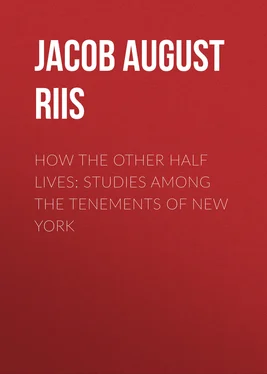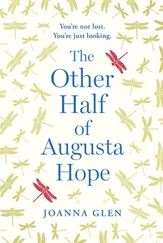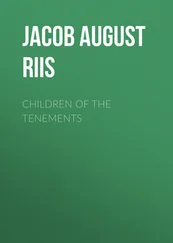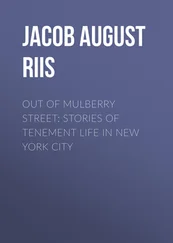Jacob August Riis - How the Other Half Lives - Studies Among the Tenements of New York
Здесь есть возможность читать онлайн «Jacob August Riis - How the Other Half Lives - Studies Among the Tenements of New York» — ознакомительный отрывок электронной книги совершенно бесплатно, а после прочтения отрывка купить полную версию. В некоторых случаях можно слушать аудио, скачать через торрент в формате fb2 и присутствует краткое содержание. Жанр: foreign_prose, sociology_book, foreign_antique, на английском языке. Описание произведения, (предисловие) а так же отзывы посетителей доступны на портале библиотеки ЛибКат.
- Название:How the Other Half Lives: Studies Among the Tenements of New York
- Автор:
- Жанр:
- Год:неизвестен
- ISBN:нет данных
- Рейтинг книги:3 / 5. Голосов: 1
-
Избранное:Добавить в избранное
- Отзывы:
-
Ваша оценка:
- 60
- 1
- 2
- 3
- 4
- 5
How the Other Half Lives: Studies Among the Tenements of New York: краткое содержание, описание и аннотация
Предлагаем к чтению аннотацию, описание, краткое содержание или предисловие (зависит от того, что написал сам автор книги «How the Other Half Lives: Studies Among the Tenements of New York»). Если вы не нашли необходимую информацию о книге — напишите в комментариях, мы постараемся отыскать её.
How the Other Half Lives: Studies Among the Tenements of New York — читать онлайн ознакомительный отрывок
Ниже представлен текст книги, разбитый по страницам. Система сохранения места последней прочитанной страницы, позволяет с удобством читать онлайн бесплатно книгу «How the Other Half Lives: Studies Among the Tenements of New York», без необходимости каждый раз заново искать на чём Вы остановились. Поставьте закладку, и сможете в любой момент перейти на страницу, на которой закончили чтение.
Интервал:
Закладка:
It is not to be assumed, of course, that the whole body of the population living in the tenements, of which New Yorkers are in the habit of speaking vaguely as “the poor,” or even the larger part of it, is to be classed as vicious or as poor in the sense of verging on beggary.
New York’s wage-earners have no other place to live, more is the pity. They are truly poor for having no better homes; waxing poorer in purse as the exorbitant rents to which they are tied, as ever was serf to soil, keep rising. The wonder is that they are not all corrupted, and speedily, by their surroundings. If, on the contrary, there be a steady working up, if not out of the slough, the fact is a powerful argument for the optimist’s belief that the world is, after all, growing better, not worse, and would go far toward disarming apprehension, were it not for the steadier growth of the sediment of the slums and its constant menace. Such an impulse toward better things there certainly is. The German rag-picker of thirty years ago, quite as low in the scale as his Italian successor, is the thrifty tradesman or prosperous farmer of to-day. 6 6 The Sheriff Street Colony of rag-pickers, long since gone, is an instance in point. The thrifty Germans saved up money during years of hard work in squalor and apparently wretched poverty to buy a township in a Western State, and the whole colony moved out there in a body. There need be no doubt about their thriving there.
The Italian scavenger of our time is fast graduating into exclusive control of the corner fruit-stands, while his black-eyed boy monopolizes the boot-blacking industry in which a few years ago he was an intruder. The Irish hod-carrier in the second generation has become a brick-layer, if not the Alderman of his ward, while the Chinese coolie is in almost exclusive possession of the laundry business. The reason is obvious. The poorest immigrant comes here with the purpose and ambition to better himself and, given half a chance, might be reasonably expected to make the most of it. To the false plea that he prefers the squalid homes in which his kind are housed there could be no better answer. The truth is, his half chance has too long been wanting, and for the bad result he has been unjustly blamed.
As emigration from east to west follows the latitude, so does the foreign influx in New York distribute itself along certain well-defined lines that waver and break only under the stronger pressure of a more gregarious race or the encroachments of inexorable business. A feeling of dependence upon mutual effort, natural to strangers in a strange land, unacquainted with its language and customs, sufficiently accounts for this.
The Irishman is the true cosmopolitan immigrant. All-pervading, he shares his lodging with perfect impartiality with the Italian, the Greek, and the “Dutchman,” yielding only to sheer force of numbers, and objects equally to them all. A map of the city, colored to designate nationalities, would show more stripes than on the skin of a zebra, and more colors than any rainbow. The city on such a map would fall into two great halves, green for the Irish prevailing in the West Side tenement districts, and blue for the Germans on the East Side. But intermingled with these ground colors would be an odd variety of tints that would give the whole the appearance of an extraordinary crazy-quilt. From down in the Sixth Ward, upon the site of the old Collect Pond that in the days of the fathers drained the hills which are no more, the red of the Italian would be seen forcing its way northward along the line of Mulberry Street to the quarter of the French purple on Bleecker Street and South Fifth Avenue, to lose itself and reappear, after a lapse of miles, in the “Little Italy” of Harlem, east of Second Avenue. Dashes of red, sharply defined, would be seen strung through the Annexed District, northward to the city line. On the West Side the red would be seen overrunning the old Africa of Thompson Street, pushing the black of the negro rapidly uptown, against querulous but unavailing protests, occupying his home, his church, his trade and all, with merciless impartiality. There is a church in Mulberry Street that has stood for two generations as a sort of milestone of these migrations. Built originally for the worship of staid New Yorkers of the “old stock,” it was engulfed by the colored tide, when the draft-riots drove the negroes out of reach of Cherry Street and the Five Points. Within the past decade the advance wave of the Italian onset reached it, and to-day the arms of United Italy adorn its front. The negroes have made a stand at several points along Seventh and Eighth Avenues; but their main body, still pursued by the Italian foe, is on the march yet, and the black mark will be found overshadowing to-day many blocks on the East Side, with One Hundredth Street as the centre, where colonies of them have settled recently.
Hardly less aggressive than the Italian, the Russian and Polish Jew, having overrun the district between Rivington and Division Streets, east of the Bowery, to the point of suffocation, is filling the tenements of the old Seventh Ward to the river front, and disputing with the Italian every foot of available space in the back alleys of Mulberry Street. The two races, differing hopelessly in much, have this in common: they carry their slums with them wherever they go, if allowed to do it. Little Italy already rivals its parent, the “Bend,” in foulness. Other nationalities that begin at the bottom make a fresh start when crowded up the ladder. Happily both are manageable, the one by rabbinical, the other by the civil law. Between the dull gray of the Jew, his favorite color, and the Italian red, would be seen squeezed in on the map a sharp streak of yellow, marking the narrow boundaries of Chinatown. Dovetailed in with the German population, the poor but thrifty Bohemian might be picked out by the sombre hue of his life as of his philosophy, struggling against heavy odds in the big human bee-hives of the East Side. Colonies of his people extend northward, with long lapses of space, from below the Cooper Institute more than three miles. The Bohemian is the only foreigner with any considerable representation in the city who counts no wealthy man of his race, none who has not to work hard for a living, or has got beyond the reach of the tenement.
Down near the Battery the West Side emerald would be soiled by a dirty stain, spreading rapidly like a splash of ink on a sheet of blotting paper, headquarters of the Arab tribe, that in a single year has swelled from the original dozen to twelve hundred, intent, every mother’s son, on trade and barter. Dots and dashes of color here and there would show where the Finnish sailors worship their djumala (God), the Greek pedlars the ancient name of their race, and the Swiss the goddess of thrift. And so on to the end of the long register, all toiling together in the galling fetters of the tenement. Were the question raised who makes the most of life thus mortgaged, who resists most stubbornly its levelling tendency—knows how to drag even the barracks upward a part of the way at least toward the ideal plane of the home—the palm must be unhesitatingly awarded the Teuton. The Italian and the poor Jew rise only by compulsion. The Chinaman does not rise at all; here, as at home, he simply remains stationary. The Irishman’s genius runs to public affairs rather than domestic life; wherever he is mustered in force the saloon is the gorgeous centre of political activity. The German struggles vainly to learn his trick; his Teutonic wit is too heavy, and the political ladder he raises from his saloon usually too short or too clumsy to reach the desired goal. The best part of his life is lived at home, and he makes himself a home independent of the surroundings, giving the lie to the saying, unhappily become a maxim of social truth, that pauperism and drunkenness naturally grow in the tenements. He makes the most of his tenement, and it should be added that whenever and as soon as he can save up money enough, he gets out and never crosses the threshold of one again.
Читать дальшеИнтервал:
Закладка:
Похожие книги на «How the Other Half Lives: Studies Among the Tenements of New York»
Представляем Вашему вниманию похожие книги на «How the Other Half Lives: Studies Among the Tenements of New York» списком для выбора. Мы отобрали схожую по названию и смыслу литературу в надежде предоставить читателям больше вариантов отыскать новые, интересные, ещё непрочитанные произведения.
Обсуждение, отзывы о книге «How the Other Half Lives: Studies Among the Tenements of New York» и просто собственные мнения читателей. Оставьте ваши комментарии, напишите, что Вы думаете о произведении, его смысле или главных героях. Укажите что конкретно понравилось, а что нет, и почему Вы так считаете.












